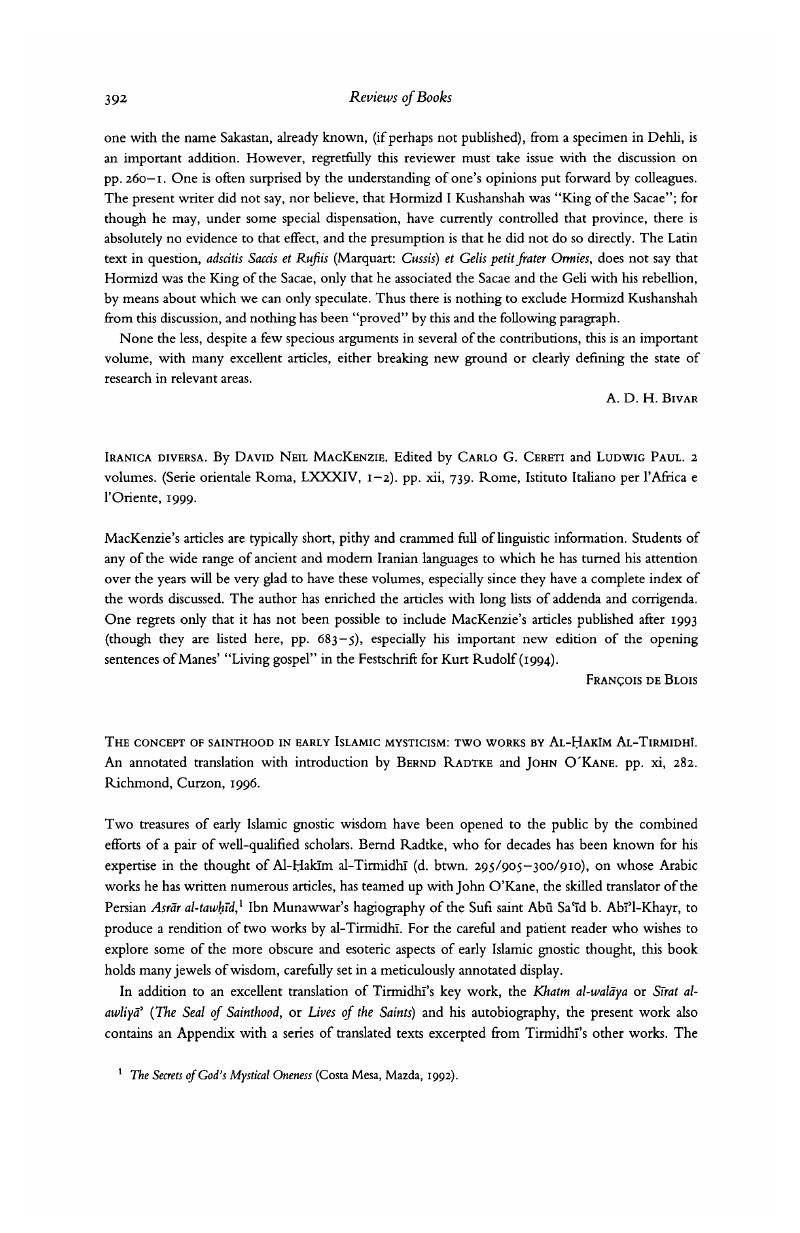No CrossRef data available.
Article contents
The concept of sainthood in early Islamic mysticism: two works by Al-Ḥakīm Al-Tirmidhī. An annotated translation with introduction by Bernd Radtke and John O'Kane. pp. xi, 282. Richmond, Curzon, 1996.
Published online by Cambridge University Press: 24 September 2009
Abstract

- Type
- Book Review
- Information
- Copyright
- Copyright © The Royal Asiatic Society 2000
References
1 The Secrets of God's Mystical Oneness (Costa Mesa, Mazda, 1992)Google Scholar.
2 Hodgson, M. G. S., The Venture of Islam (Chicago, 1977), II, pp. 200–54Google Scholar; especially the two sections on “The human outreach of the mystics”, pp. 204–6) and “The catholic appeal of Ṣūfism” (pp. 217–20). He points out that “the comprehensive humanity with which a Ṣūfī could preach gave the Ṣūfī tradition: an often spectacular advantage” over “Sharī‘ah-minded scholars eager to accuse the dissident of religious infidelity” (pp. 209).
3 Describing recent developments in the Islamic world, Ernst notes that “Many examples could be cited of conflict between fundamentalists and Sufis over the past two centuries, from the Indonesian dakwa movements to the persecution of Sufi orders in revolutionary Iran. One of the early examples was the series of debates held by Shaykh Ahmad ibn Idris, an extremely influential Sufi reformer in North Africa … This kind of debate has continued to shape the lives of Muslims ever since.” The Shambhala Guide to Sufism (London & Boston, Shambhala 1997), p. 214Google Scholar.




